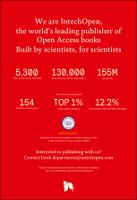Chapter Transport Protocol Performance and Impact on QoS while on the Move in Current and Future Low Latency Deployments
| dc.contributor.author | Liberal, Fidel | |
| dc.contributor.author | Oscar Fajardo, Jose | |
| dc.contributor.author | Atxutegi, Eneko | |
| dc.date.accessioned | 2021-06-02T10:11:16Z | |
| dc.date.available | 2021-06-02T10:11:16Z | |
| dc.date.issued | 2018 | |
| dc.identifier | ONIX_20210602_10.5772/intechopen.71779_394 | |
| dc.identifier.uri | https://library.oapen.org/handle/20.500.12657/49280 | |
| dc.description.abstract | Transport protocols and mobile networks have evolved independently leading to a lack of adaptability and quality of service (QoS) degradation while running under the variability circumstances present in cellular access. This chapter evaluates the performance of state-of-the-art transmission control protocol (TCP) implementations in challenging mobility scenarios under 4G latencies and low delays that model the proximity service provisioning of forthcoming 5G networks. The evaluation is focused on selecting the most appropriate TCP flavor for each scenario taking into account two metrics: (1) the goodput-based performance and (2) a balanced performance metric that includes parameters based on goodput, delay and retransmitted packets. The results show that mobility scenarios under 4G latencies require more aggressive TCP solutions in order to overcome the high variability in comparison with low latency conditions. Bottleneck Bandwidth and Round-Trip Time-RTT (BBR) provides better scalability than others and Illinois is more capable of sustaining the goodput with big variability between consecutive samples. Besides, CUBIC performs better in lower available capacity scenarios and regarding the balanced metric. In reduced end-to-end latencies, the most suitable congestion control algorithms (CCAs) to maximize the goodput are NewReno (low available capacity) and CUBIC (high available capacity) when moving with continuous capacity increases. Additionally, BBR shows a balanced and controlled behavior in most of the scenarios. | |
| dc.language | English | |
| dc.subject.classification | thema EDItEUR::T Technology, Engineering, Agriculture, Industrial processes::TJ Electronics and communications engineering::TJK Communications engineering / telecommunications | en_US |
| dc.subject.other | transport protocols, performance, mobility, 4G, low latency, 5G | |
| dc.title | Chapter Transport Protocol Performance and Impact on QoS while on the Move in Current and Future Low Latency Deployments | |
| dc.type | chapter | |
| oapen.identifier.doi | 10.5772/intechopen.71779 | |
| oapen.relation.isPublishedBy | 09f6769d-48ed-467d-b150-4cf2680656a1 | |
| oapen.relation.isFundedBy | H2020-ICT-2014-1 | |
| oapen.grant.number | 644399 | |
| oapen.grant.acronym | MONROE |

